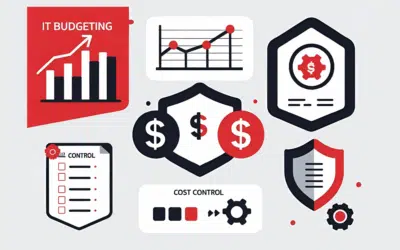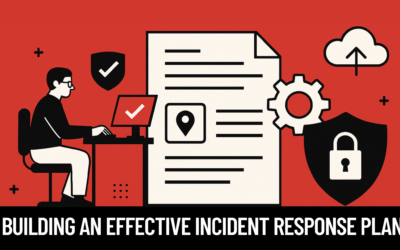With every new day, technology seems to jump leaps and bounds. Each new gadget vies for your attention, saying, “Aren’t I shiny? Wouldn’t I make your life so much better?” Because technology is always changing, keeping a grip on your IT budget can be difficult. Because business is challenging enough, we want to give you a few ways to help you streamline your IT budget so that you can free up cash to drive your business in other ways.
1. Analyze Your Equipment
For many SMBs, growth comes in waves. Often this means that equipment, like computers and phones and the like, are added piecemeal when the necessity arrives. While this creates temporary fixes, some long-term planning can do wonders for your IT budget. You need to find the equipment that best serves your business needs, and ensure you have the hardware that works across the board for your team and allows for scalability.
2. Cancel Unused Software
The target of any business is to build recurring revenue, whether it’s for something you need, or something you think you need, but really don’t. Think of the post-New Year bump in gym memberships. Many of those memberships go unused, but still paid every month. You never want to keep a recurring expense on software that isn’t imperative to your business – especially when some experts put the average cost of software waste at $259 per desktop. Analysis of software programs should be thorough. Think: Slash and burn.
3. Unify Productivity Tools
One big speed bump on the road to productivity is your staff using disparate tools to get the job done. A recent study showed that the average worker wastes 22 minutes on IT-related issues. By unifying tools, there’s no time lost in the integration of systems or distribution of materials. Each staff member is well-accustomed to the tools of the office, making for better productivity and collaboration, both of which heavily impact your bottom line.
4. Automate When Possible
Advances in automation are significant, and may or may not offer enticing benefits to your businesses. But the bottom line impact, particularly with CFOs, is that automated tasks can free up your staff for better, higher-value projects. A little research into automation possibilities can give you an edge on your competitors and, ultimately, help you deliver a better product. Plus, automation is great for streamlining IT budgets.
5. Explore BYOD
Right now, 87% of companies rely on their employees using personal devices to access business apps. Allowing employees to bring their own devices (iPhones, iPads and the like), you not only cut down on huge hardware expenses but you also improve employee satisfaction by limiting the amounts of devices that need attention on a daily basis. If you haven’t planned for a BYOD culture, consider it.
6. Plan for Mobility
Mobility is key in the modern workplace. With many millennials and even parents opting for mobile workdays over higher salaries, growing businesses must consider mobility an opportunity. By diminishing the number of onsite employees and equipment, mobility can cut down on workspace costs without diminishing productivity.
7. Don’t Overpay
It’s a bit of a no-brainer, but because technology has complication behind it, many SMBs are overpaying for features and tools they don’t use. But you can turn that around with a good system analysis. Don’t get lost in long and complicated bills. Drill down and find out what exactly you’re paying for and what kind of value it brings to your business.
8. Don’t Underpay
Underpaying can also cause budgeting problems. By cutting corners, you could end up paying much more for results in the long run. By finding the cheapest solution in the market, you could find yourself missing the tools and resources you need and adapting your business goals to your technology, rather than the other way ‘round.
9. Set Goals (and Follow Up)
Setting goals is important in any situation. With IT budgeting, you want to create a clear picture of the next few months, and the next few years. But the key is to follow up. Are you on track with expectations? If not, where did you go off the path? Create goals, schedule meetings and keep the stakeholders on task with how you expect your IT budget to push your business as you grow.
10. Choose Managed IT Services
All of these methods require attention. Outsourcing your IT to managed services allows you, in effect, to create a business partner that helps you streamline your budget. With a flat, monthly fee, you switch your IT budget from CAPEX to OPEX, giving you predictable costs, with no surprises. Plus, you get someone on your side who only benefits when your business succeeds.
Call us today to see how managed IT services are right for you and your IT budget.








